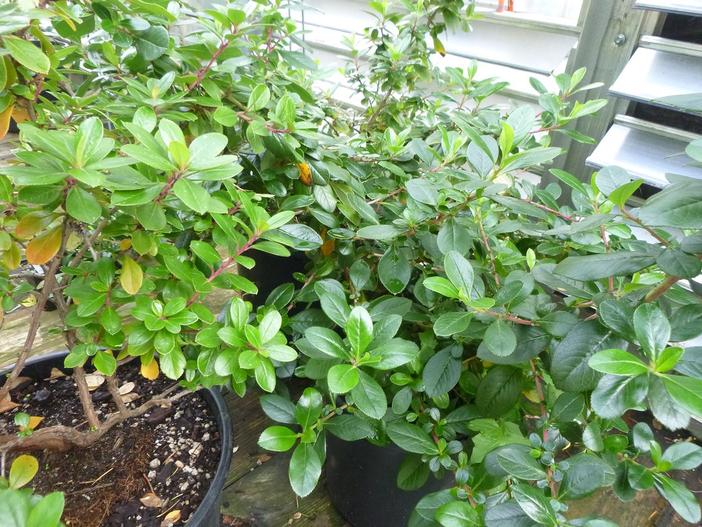Pink Princess Escallonia
(Escallonia ×exoniensis)
Pink Princess Escallonia (Escallonia ×exoniensis)
/
/

SuperFantastic
CC BY 2.0
Image By:
SuperFantastic
Recorded By:
Copyright:
CC BY 2.0
Copyright Notice:
Photo by: SuperFantastic | License Type: CC BY 2.0 | License URL: https://creativecommons.org/licenses/by/2.0/ | Uploader: SuperFantastic | Publisher: Flickr


Estimated Native Range
Summary
Escallonia ×exoniensis, commonly known as Pink Princess Escallonia, is a semi-evergreen shrub resulting from the hybridization of Escallonia rubra and Escallonia bifida. It exhibits a moderate growth rate, reaching heights of 6-10 feet (1.8-3 meters) and widths of 5-10 feet (1.5-3 meters). This hybrid typically features dense, glossy green foliage and clusters of pink, tubular flowers that are particularly showy during the summer months. The flowers are attractive to pollinators such as bees and butterflies.
Pink Princess Escallonia is valued for its ease of maintenance, extended flowering period, and its use as a colorful addition to mixed borders, hedges, and coastal gardens. It thrives in a range of soil types, including clay, loam, and sandy soils, provided they offer good drainage. While it prefers full sun to part shade, it is also tolerant of coastal conditions and can handle salt spray. Regular pruning helps maintain its shape and encourages more prolific blooming. Gardeners should be aware that Escallonia can suffer from fungal diseases such as leaf spot and honey fungus, and may also be prone to damage from aphids and scale insects.CC BY-SA 4.0
Pink Princess Escallonia is valued for its ease of maintenance, extended flowering period, and its use as a colorful addition to mixed borders, hedges, and coastal gardens. It thrives in a range of soil types, including clay, loam, and sandy soils, provided they offer good drainage. While it prefers full sun to part shade, it is also tolerant of coastal conditions and can handle salt spray. Regular pruning helps maintain its shape and encourages more prolific blooming. Gardeners should be aware that Escallonia can suffer from fungal diseases such as leaf spot and honey fungus, and may also be prone to damage from aphids and scale insects.CC BY-SA 4.0
Plant Description
- Plant Type: Shrub
- Height: 6-10 feet
- Width: 5-10 feet
- Growth Rate: Moderate
- Flower Color: Pink
- Flowering Season: Summer
- Leaf Retention: Evergreen
Growth Requirements
- Sun: Full Sun, Part Shade
- Water: Medium
- Drainage: Fast, Medium
Common Uses
Bird Garden, Border Plant, Butterfly Garden, Hedges, Low Maintenance, Showy Flowers, Street Planting
Natural Habitat
Escallonia ×exoniensis is not a natural species and thus does not have a native habitat, but it is well-suited to coastal gardens and mixed borders
Other Names
Common Names:
Scientific Names: Escallonia exoniensis
GBIF Accepted Name: